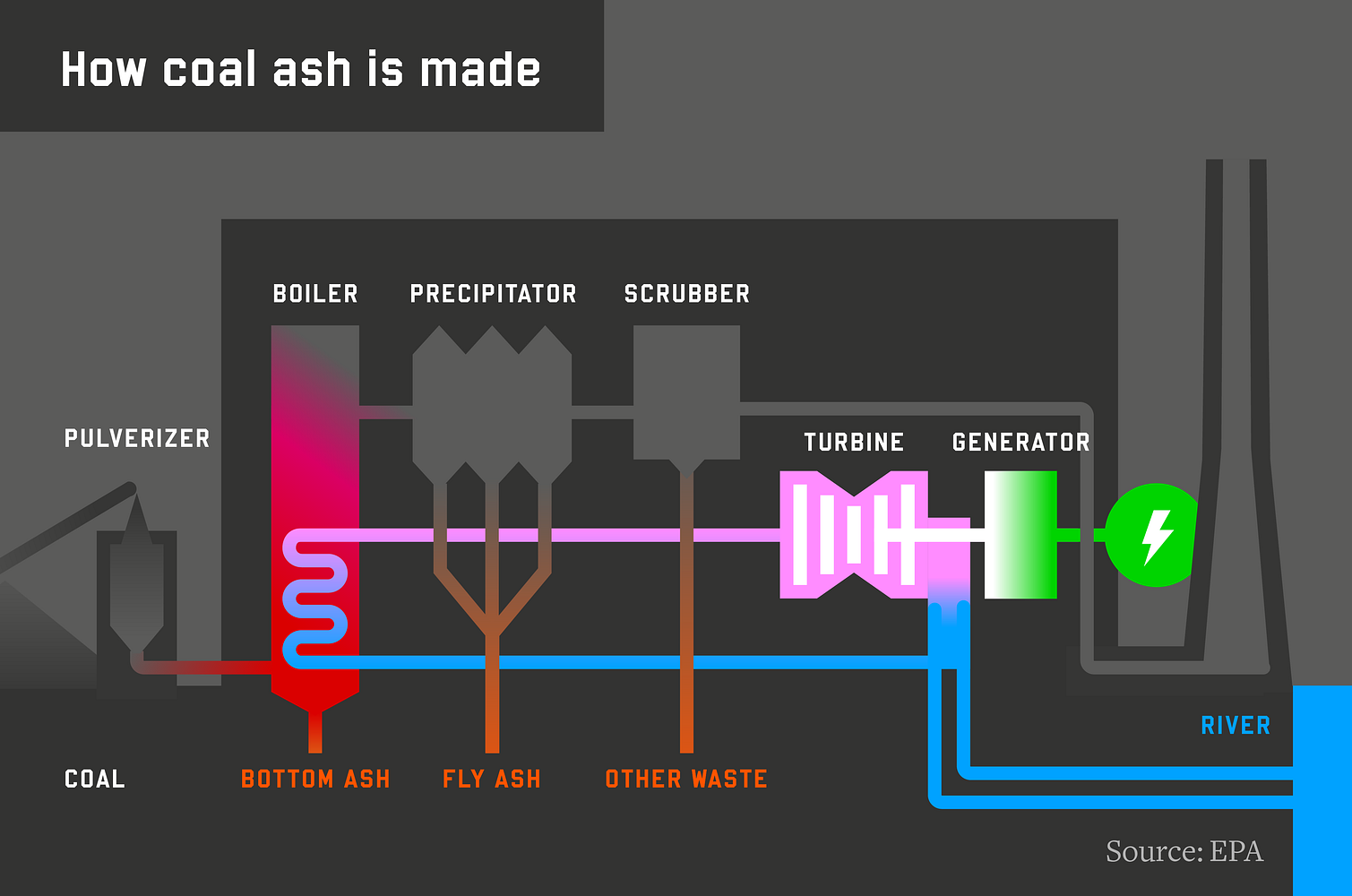When the rivers run black
Posted by Big Gav in coal
Medium has a look at the problem of coal ash - When the rivers run black.
The most toxic byproduct of coal-fired power isn’t carbon dioxide. It’s the residue that’s left over. When coal is burned in a plant, just like in a home, it produces two kinds of ash: fly ash, which rises, and bottom ash, which sinks to the floor of the furnace. Together, they comprise coal ash. In a power plant, all that ash has to be put somewhere.For many years Kingston was the largest coal plant in the United States, which meant the facility produced a lot of coal ash. It was mixed with water to stop it from blowing around and dumped into the retaining pond, which quickly swelled with the waste. As the region grew, demand for electricity soared, more coal was burned, and the TVA built the walls of the pond higher and higher. By 2008, they stood 60 feet tall, and the pond held more than a billion gallons of coal ash slurry.
Shortly before 1 A.M. on December 22, 2008, the walls broke.
One corner of the dike, exhausted after a half-century of pressure and decay, collapsed. The coal ash sludge poured out, tearing a hole that kept on growing. Once outside, the slurry built up force and barreled over a sequence of outer dikes. ...
The TVA is the largest public power provider in the country, serving nine million people across seven states.
Like many other power companies, it has slowly been expanding its energy portfolio, but coal remains its backbone. And, like the rest, it has been upgrading that infrastructure, forced by the Environmental Protection Agency to make its plants run cleaner and more efficiently. Usually, that means installing scrubber systems in the smokestacks, which clean the emissions of pollutants like mercury, toxic metals, and acid-rain-causing sulfur dioxide.
The result is that the exhaust that emerges today is far cleaner than it was decades ago. But cleaning up the airborne emissions means that the solids remaining after the burn are far dirtier than before. In fact, coal ash is often loaded with arsenic, mercury, lead, and other contaminating elements. A 2012 study published in the journal Environmental Science & Technology found that cleaner air emissions are traded for “significant enrichments of contaminants in solid wastes and wastewater discharged from power plants.”
According to the American Coal Ash Association, the nation churns out nearly 65 million tons of coal ash annually. However, despite the fact that it is replete with toxins, coal ash is essentially unregulated by the federal government, with oversight meant to happen at state level. Yet most states handle the material with less precaution than your standard household garbage.
The “best” use for coal ash, say scientists, is to recycle it and use it in cement, which means the contaminants get locked in and cannot leach out. But there are a range of other recycling methods, including using it in asphalt and wallboard, spreading it as a soil amendment, or using it as a substitute for salt on icy roads. One particularly novel method of disposal is dumping it into abandoned mines. Most coal ash, though, is simply carted off to landfills or placed in retaining ponds like the one at Kingston. Many of the ponds, including Kingston’s failed one, are not just built to contain the coal ash, but actually use it as a construction material in their dams and dikes.
In Kingston, it was the dike that broke, but spills and contamination can happen in all kinds of ways. In 2005, a log wall broke in a basin at a Pennsylvania power plant, spilling at least 100 million gallons of coal ash into the Oughoughton Creek and Delaware River. In October 2011, a bluff at a Wisconsin power plant collapsed, spilling coal ash into Lake Michigan.
Environmental groups dislike pond storage, arguing that wet ash is more likely to leach contaminants into nearby water supplies, as well as being a far greater risk for catastrophic spills. A draft EPA risk assessment released in 2010 showed that coal ash ponds pose greater risk to human health due to leaching than landfills.
Charles Norris of Geo-Hydro Inc, a scientist from Denver who has testified before Congress on the subject of coal ash, says things are made even worse by using it as a construction material. Not only does this let even more contaminants leach out, but over time it compromises the structural integrity of the pond. Kingston, Norris believes, is unlikely to be the last incident of its kind. “The use of this as a construction material is new enough that we’re probably just looking at the beginning few failures,” he says.






